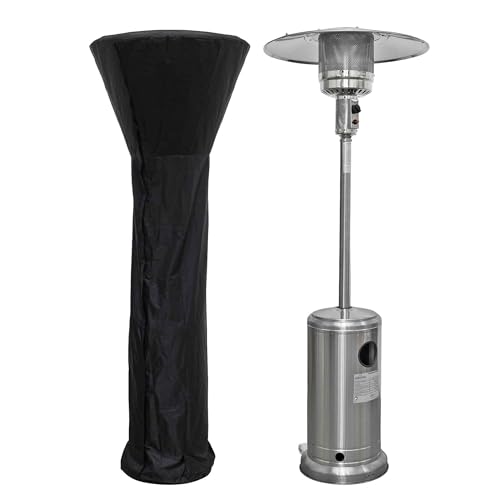Five Things You Don't Know About Garden Heating Solutions
Garden Heating Solutions: Enhancing Outdoor Spaces Year-Round
As seasonal modifications bring differing temperatures, garden enthusiasts face the difficulty of maintaining their valued outdoor spaces. Whether for cultivating plants, amusing guests, or just taking pleasure in the fresh air, garden heating solutions are essential to making the most of satisfaction and functionality. This post explores numerous options offered for heating gardens, consisting of standard and modern solutions, their benefits, and practical suggestions for application.
Comprehending the Need for Garden Heating
A properly maintained garden ought to be a year-round sanctuary, offering respite in both summer season and winter season. The requirement for garden heating develops from:
- Frost Protection: Certain plants, particularly tender ranges, require defense from frost to endure colder months.
- Extended Growing Seasons: Heating solutions can permit earlier planting in spring and later on gathering in fall.
- Comfort Optimization: Outdoor events and activities can occur more easily with regulated temperatures.
Kinds Of Garden Heating Solutions
Garden heating solutions can be divided into numerous categories based upon their innovation and fuel source. Here's an in-depth look at some popular options:
1. Electric Heaters
Electric heaters are a flexible choice for smaller sized gardens and patios. They are easy to install and run, providing instantaneous warmth with very little effort.
- Kinds Of Electric Heaters:
- Patio Heaters: Freestanding systems with a heating element that radiates heat.
- Wall-mounted Heaters: Ideal for little spaces; these heaters save ground space while offering heat.
- Portable Electric Fans: Great for targeted heating in specific areas.
2. Gas Heaters
Gas patio heaters are a conventional choice for outdoor heating and are extensively appreciated for their efficiency and visual appeal.
- Kinds Of Gas Heaters:
- Propane Heaters: Easy to carry and set up, suitable for a lot of outdoor settings.
- Natural Gas Heaters: Permanent fixtures, ideal for locations with existing gas lines.
3. Wood-burning Solutions
For a rustic touch, wood-burning solutions such as fire pits and chimineas add warmth and ambiance to gardens.
- Benefits and drawbacks of Wood-burning Heating:
- Advantages: Aesthetic appeal, social environment, and effective heat circulation.
- Downsides: Requires more upkeep, management of ashes, and prospective fire risks.
4. Infrared Heaters
Infrared heaters use infrared radiation to directly warm things, making them energy-efficient and best for outdoor spaces.
- Advantages: Immediate heat, very little energy loss, and viability for all climate condition.
5. Outdoor Heating Mats and Blankets
For smaller sized patio areas or particular zones in a garden, heating mats and blankets can be an ingenious solution to supply an additional layer of heat.
Factors to consider for Choosing a Heating Solution
When choosing the very best heating option for a garden, several aspects should be examined:
- Garden Size: Larger areas might require several heating sources for efficient warmth.
- Budget plan: Various options exist at different price points. Cost-effectiveness can determine the chosen approach.
- Security: Evaluate the security features of the heating options, particularly when utilizing gas or wood-burning solutions.
- Aesthetic Appeal: Integration with garden design can enhance total visual enjoyment.
Table 1: Comparison of Garden Heating Solutions
Type
Installation
Fuel Source
Effectiveness
Expense
Electric Heater
Easy
Electrical power
Rapid/Immediate
Moderate
Gas Heater
Moderate
Propane/Natural
High/Effective
Moderate to High
Wood-burning Option
Moderate/Hard
Wood
Efficient
Low to Moderate
Infrared Heater
Easy
Electrical energy
Immediate
Moderate to High
Heating Mats/Blankets
Easy
Electricity
Targeted
Low to Moderate
Executing Garden Heating Solutions
To ensure effective heating in outdoor settings, a tactical approach is required. Here are some practical suggestions:
- Evaluate the Layout: Consider the garden design to recognize areas where heating is most required.
- Pick Multidirectional Heaters: This will assist distribute heat more uniformly across the space.
- Boost Insulation: Utilize windbreaks (like garden walls) or heat-retaining products around the heating setup.
- Integrate Decor: Attractive designs of heating units can enhance the garden's ambiance while supplying warmth.
- Regular Maintenance: Ensure that heaters (especially gas and wood-burning) are kept for optimum performance and security.
Frequently Asked Questions About Garden Heating Solutions
1. How safe are electric heaters for outdoor use?
Electric heaters developed for outdoor usage are typically safe when installed properly. Always follow My Source and safety directions to mitigate threats.
2. Can I leave my gas heater outside during winter?
While numerous gas heaters are built for endurance outdoors, it's advisable to cover them or store them indoors to protect them from harsh weather conditions.
3. Exist energy-efficient options for heating my garden?
Yes! Infrared heaters and heating mats are especially energy-efficient as they focus heating in particular areas instead of warming the surrounding air.
4. What are the finest plants to grow in a heated up garden?
Popular options include tomatoes, herbs, peppers, and other tender plants that flourish in temperatures above 50 ° F (10 ° C).
Garden heating solutions profoundly boost outdoor spaces, enabling year-round satisfaction and enhanced plant growth. By understanding the different types of heating options readily available and making notified choices based upon personal choices and particular garden conditions, garden enthusiasts can change their outdoor locations into cozy retreats, no matter the season.
